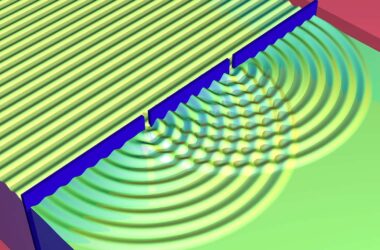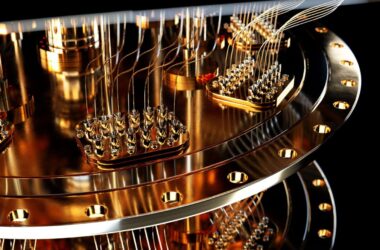Quantum computers could be built that are based on sound
CVI Textures / Alamy Stock Photo
A new development has shown that a fundamental component for sound-based quantum computers is now functional.
Traditionally, quantum computers are built by encoding information into quantum states of light particles and manipulating that information with the help of mirrors and lenses. However, Andrew Cleland and his colleagues from the University of Chicago sought to achieve the same result using particles of sound.
Sound is produced when an object or substance vibrates, and what we hear as continuous noise is actually a series of tiny chunks of vibration, referred to as phonons.
Cleland explains, “Making a phonon requires that quadrillions of atoms move collectively, but in our experiment, each is a single quantum object. Physicists sometimes make phonons sound like they are just a convenient trick for thinking about sound, but here they are very real.”
The team developed a chip-sized device with components made of a perfectly conducting material that can generate phonons individually and send them to other parts of the device. These phonons are observed at a temperature that is a hundredth of a kelvin in order to exhibit quantum effects. Each phonon is pitched about a million times higher than audible sound.
While similar chips have been built previously, the team added a new element – a beam splitter. It consists of 16 tiny parallel aluminum strips that reflect and transmit any sound that comes into contact with them. When a phonon is directed at the beam splitter, instead of splitting into two, it assumes a quantum superposition state where the entire particle exists simultaneously in the reflected and transmitted states.
Cleland states that this is a crucial step for quantum computers that rely on particles of light to perform calculations. The researchers also managed to replicate the interactions between two particles of light, known as “talking to each other,” and control their behavior during light-based computations. This further enhances the resemblance of their chip to a sound-based quantum computer, and they plan to use this procedure to implement simple operations that comprise computer programs in the future.
Dirk Bouwmeester from the University of California, Santa Barbara comments on the significance of this achievement, stating that beam splitters are vital for procedures like quantum teleportation and creating entanglement using light particles. Now, these procedures could potentially be carried out using sound particles as well. He describes the ability to replace photons with phonons as “truly spectacular.”
In addition, Yiwen Chu from the Swiss Federal Institute of Technology in Zurich suggests that future experiments could utilize phonons to transfer quantum information between different components of a quantum computing chip that are difficult to connect.
Cleland expresses his excitement about the possibilities of building a sound-based quantum computer, not only for solving currently unsolvable problems but also for exploring the potential of quantum physics with mechanical objects. He says, “Phonons are somehow more tangible, more ‘meaty’ than light, but they have been showing the same quantum behaviors. This is amazing to me.”
Topics:








